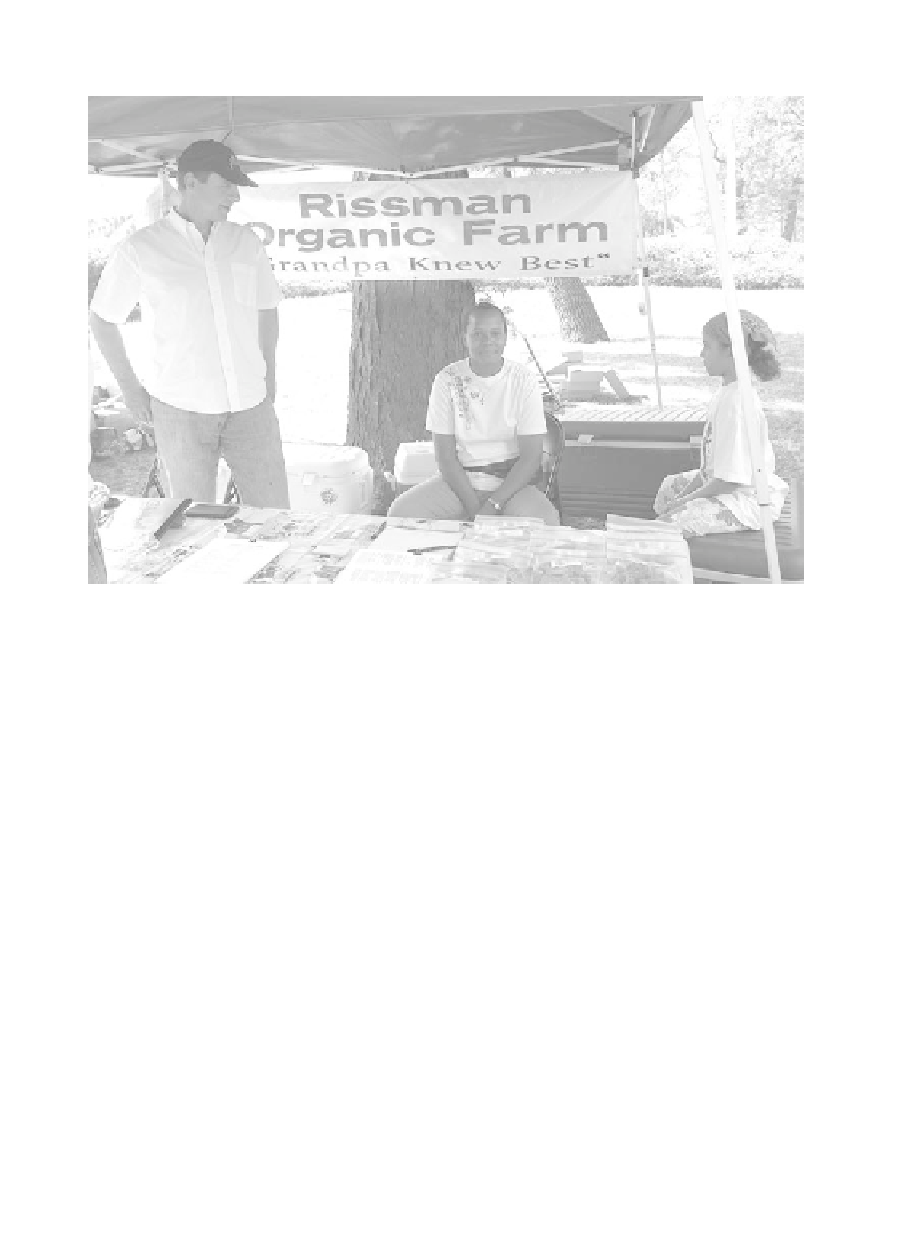Agriculture Reference
In-Depth Information
1
2
3
4
5
6
7
8
9
10
11
12
13
14
15
16
17
18
19
20
21
22
23
24
25
26
27
28
29
30
31
32
33
34
35
36
37
38
39
40
[117],
(27)
Lines: 344 to 348
———
8.57254pt PgVar
———
Normal Page
PgEnds: T
E
X
The Rissmans at the Green City Farmers' Market in Chicago. (Credit: Glenda Kapsalis)
hi
m it wasn't going to be easy, and it hasn't. But it is a lot more fun.”Plus the
ch
emical concerns are gone. “You don't have to worry about rinsing [after
ap
plications] and your kids getting into something.”
Joel has clear opinions about the dangers of agrichemicals. He describes
on
e neighbor: “Mr. McDonnell. He's retired now, but he farmed for years.
An
d his story, he said every spring he would go partially blind. He came
to
find out it was from the chemicals he was using.” But often it's the
la
nd owner, not the farmer who rents and works the land, who insists that
ch
emicals be used because they think pesticides help to avert economic risk.
Fo
r Mr. McDonnell, apparently, this was a concern. Land ownership and
de
cision making are often distinct in conventional Corn Belt agriculture, as
la
ndowners often lease out land to farmers who grow corn and soybeans on
thousands of acres of geographically dispersed ground.
When questioned further about his motivations for being an organic
farmer, Joel says, “I thought about it in high school, because my dad has
Parkinson's. It's from the chemicals. No one will change his mind or my
mind. Yeah, he thinks that, too. It's from the chemical use and exposure to
it. They get a neurological magazine that has found a pretty good correlation
between chemical usage - insecticides mainly. And that is what he handled
[117],
(27)






















